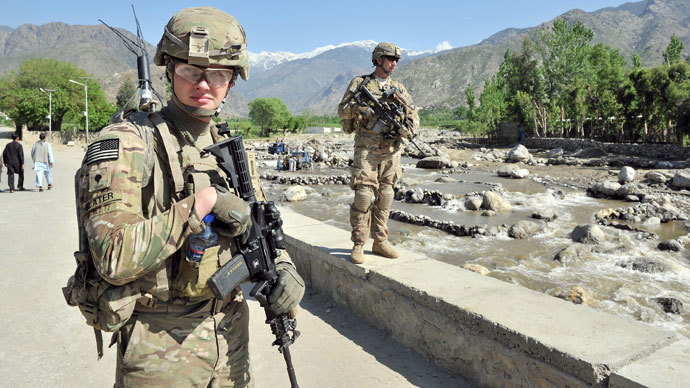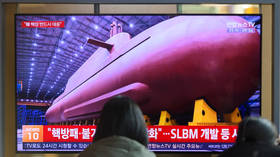The Iron Man cometh: US Army commissions 'TALOS' suit with liquid armor

The fantastic fictional powers enjoyed by comic book superheroes and villains – including enhanced strength, night vision and resistance to bullets - may become a reality soon if the US military gets its way.
As if inspired by Marvel Comics itself, the Special Operations
Command (SOCOM) has commissioned a Tactical Assault Light
Operator Suit, or TALOS for short, which will likely contain
liquid armor, a substance that is being developed at the
Massachusetts Institute of Technology, according to the official
website of the US Army.
The material can change from liquid to solid in milliseconds when
a magnetic field or electrical current is applied, allowing a
soldier wearing the protective suit to survive attack from heavy
gunfire
The outfit is also expected to include its own internal supply of
heat, air and oxygen.
Public discussion about creating a 21st century suit of armor for
US soldiers increased following the US Army’s failed mission last
week in Somalia. Members of an elite Navy SEALS unit were forced
to retreat in the face of heavy gunfire, while attempting to
capture an Al-Shabaab commander believed to be connected to one
of the 1998 US embassy bombings in Africa.
SOCOM, hoping to tap into a deep well of engineering talent, last
month issued a request for ideas “from a wide
variety of sources, not just traditional military industry but
also from academia, entrepreneurs, and laboratories capable of
providing the design, construction, and testing of TALOS related
technologies.”
Super soldiers?
US Special Operations Command chief Adm. William McRaven believes
the technology will make US soldiers practically invincible on
the battlefield.
"I'm very committed to this, I'd like that last operator that
we lost to be the last operator we lose in this fight or the
fight of the future, and I think we can get there," McRaven
told industry representatives gathered at SOCOM headquarters in
Tampa, Florida, last July to discuss the creation of the
technology.
A combat simulation video that appears on YouTube
features a soldier donning the Sci-Fi-like body armor smashing
through a wooden door before staring down a hail of machinegun
fire.
SOCOM hopes to incorporate a “comprehensive family of systems
in a combat armor suit where we bring together an exoskeleton
with innovative armor, displays for power monitoring, health
monitoring, and integrating a weapon into that – a whole bunch of
stuff," Lt. Col. Karl Borjes, an Army science advisor
assigned to SOCOM, said in a statement.
TALOS will contain "full-body ballistic protections," as
well as a “physiological subsystem” that covers the skin of the
wearer and is embedded with sensors to monitor “body
temperature, skin temperature, heart rate, body position and
hydration levels,” according to the government's May posting.
McRaven goes beyond anything Superman could have imagined,
envisioning that the suit wearer's "cognitive thoughts and the
surrounding environment to display personalized information."
And should a soldier suffer an injury despite the
state-of-the-art suit of armor, “the TALOS would monitor their
health and even stop bleeding using a "wound stasis" program such
as one being developed by DARPA that sprays foam onto open
injuries,” John Reed, a military expert, wrote in Foreign
Policy.
It is no secret that such technologies have been undergoing
development for more than a decade. Defense contractors have been
working on exoskeletons, for example, that would permit foot
soldiers to carry more gear and run faster than they normally
could on their own.
Lockheed Martin has been attempting to move its Human Universal
Load Carrier (HULC) exoskeleton to Afghanistan where it will be
combat-tested by troops, David Axe reported in Wired last May.
Not everybody, however, is so upbeat about the ‘Iron Man’
technologies being planned for American troops.
“My sense is it is an uparmored Pinocchio,” Scott Neil, a
retired Special Forces master sergeant and Silver Star recipient,
told the Tampa Tribune. “Now the commander can shove a monkey
in a suit and ask us to survive a machine gun, IED, and poor
intelligence all on the same objective. And when you die in it,
as it melts to your body, you can bury them in it!”
Neil then offered his thoughts on what would make the best type
of suit for US soldiers.
“A business suit,” he replied, arguing that after so many
military misadventures abroad, US troops need “transitioning
back to be ordinary Americans.”












